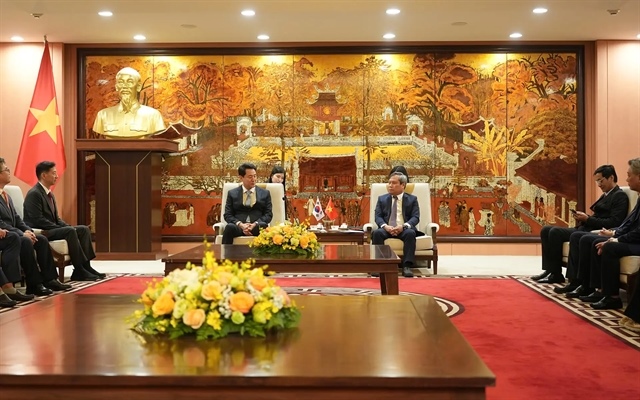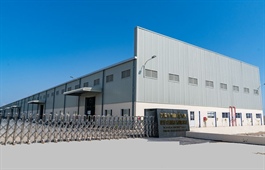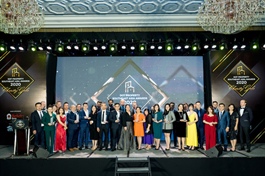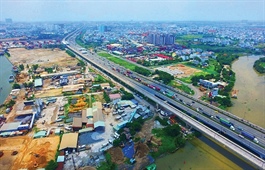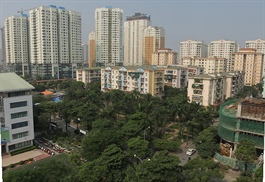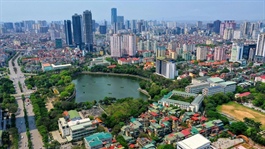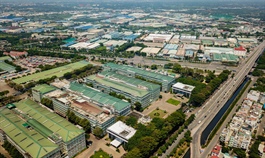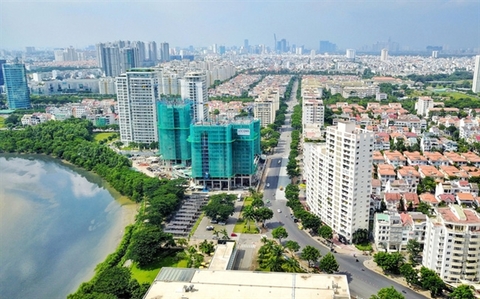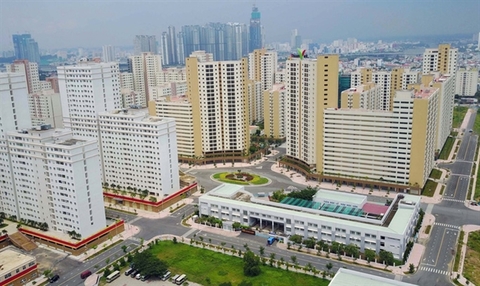What can make Thu Duc a successful city within a city?
What can make Thu Duc a successful city within a city?
Innovation capacity, connectivity and regional links are the factors that could make Thu Duc, a city carved out of Saigon, a regional and international hub, experts say.
The Ben Thanh - Suoi Tien metro line section in Thu Duc District, HCMC, in October 2019. Photo by VnExpress/Quynh Tran.
|
On Dec 9 Vietnam's parliament formally approved the establishment of a city within a city in HCMC called Thu Duc.
To be formed by merging three eastern districts – 2, 9, and Thu Duc – it will come into existence on January 1.
Experts said authorities should invest in digital infrastructure to ensure the new city is well connected with other places in the region and across the world like Singapore, Hong Kong, Beijing, or even Silicon Valley in the U.S.
Professor Richard Hu of the Canberra Business School and Institute for Governance and Policy Analysis, University of Canberra, Australia, said innovation capacity is a concept called place-based innovation, which could make a place attractive to global talent and not just Vietnamese.
People not only need hard infrastructure like five-star hotels, commercial and office buildings, cafes and shops, restaurants, parks, and museums, but also places to have new ideas, he said.
Soft infrastructure such as typical culture, social tolerance, and acceptance of differences is also important.
HCMC has been an emerging manufacturing hub, but in the long run it must export knowledge instead, Hu said.
It could become an innovation center, developing high technology, like Shenzhen in China, he pointed out.
For that, authorities should invest in universities and adopt policies that attract international talent to Thu Duc, he said.
In the three districts that are being merged, there are universities, research and development institutions and think tanks.
Hu said if the government provides funds and builds a reputation for them, local universities could collaborate with American, British and Australian universities to build local campuses. This would generate not only human resources but also new inventions and knowledge, he said.
Many Western universities are in financial trouble because of Covid-19 since international students are unable to travel, he said.
Quality universities could offer career options that entice Vietnamese living abroad, he said.
He suggested that Thu Duc should be given autonomy in decision making and policy incentives to grow its innovation capacity and make it more competitive like China did in Shenzhen, whose economy is now larger than Hong Kong’s.
Allen Scott, professor of economic geography and regional development at the University of California, Los Angeles, the U.S., said if Vietnam treats Thu Duc as a suburban city like in the U.S. and Europe, it could become an economic hub focused on technology and industrial parks.
The most successful case of such a city in the U.S. is Silicon Valley.
One of the big ideas in urban and regional development today is to build agglomerations and clusters, he said. But it is not enough if they merely have industrial parks, and authorities should instead choose the kinds of industries and firms these parks host, he said.
They need to be sure there are complementarities between various producers, and the firms and industries identified for the parks should create an efficient and innovative environment, he said.
The city needs to have plenty of discussions, public meetings and debates about what options are available and what should be chosen, he said.
Hyun Bang Shin, professor of geography and urban studies, London School of Economics and Political Science, the U.K., said another keyword for a successful city is connectivity.
There needs to be effective connectivity within Thu Duc and between it and the rest of HCMC "so that authorities don't create a city that is isolated or becomes an exclusive zone."
Connectivity refers to geography, infrastructure, public transport, and the movement of people, he said.
The city needs to have infrastructure in place to ensure this connectivity, and it should be sustainable and green, he said.
"I think the sustainable infrastructure can become an inspiration for the rest of HCMC and for the rest of the country."
Adding to the point about connectivity, Scott said authorities need to consider how to integrate the technology industries and services in Thu Duc with the rest of HCMC.
"It should not be an isolated development which causes decline and decay in the rest of the metropolitan area."
Dr. Kris Hartley, assistant professor of public policy at the Education University of Hong Kong, said creating Thu Duc as a city within a city implies that many crucial elements for success already exist there, like facilitative infrastructure, a diverse and mutually complementary economic mix and a population base whose consumption, enterprise activity and contribution to employment could help maintain growth.
Thu Duc could position itself as a regional or Southeast Asian leader in infrastructure quality and multi-modal logistics, labor skill (particularly for industry 4.0), universities and research centers, and technology zones and initiatives that could attract new firms looking for a readymade industrial ecosystem, he said.
This identity gives the city multiple dimensions to build on in terms of present advantages and future directions for policies and public investment, he said.
He suggested that Thu Duc might benefit from embracing the concept of new structural economics promoted by a group of prominent development scholars at Peking University.
The concept requires Thu Duc to carefully assess its inherent structural advantages like labor skills, technology and market access, and proceed to facilitate economic growth that fully utilizes them, he explained.
It also requires the government to play a facilitative role in guiding the city’s development in a way that is consistent with the structural advantages.
Shin said it would take time for HCMC and Thu Duc in particular to become global financial centers, citing the instance of Canary Wharf, a new financial center within London.
It took nearly 20 years for Canary Wharf to become a secondary center and it went through a lot of difficulties and problems, he said.
"Success is dependent on how long political will lasts; it needs consistency and persistence over many years."







